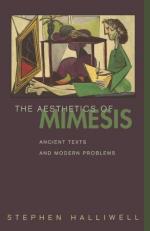|
This section contains 882 words (approx. 3 pages at 300 words per page) |

|
This title already raises the conundrum that "the sublime" has regularly, although in different ways, posed. The substantivized form of the adjective suggests something one could point to where sublimity resides. The sublime might even be misconstrued (as it was by Edmund Burke) as a property of certain objects. But the sublime refers to no thing; it is instead an effect produced by the limits of our capacities for perception and representation. As such the sublime has played a vital role in the history of aesthetic theory as well as in postmodernist debates about representation and the limits of knowledge.
The sublime was first theorized by the pseudonymous Longinus in On the Sublime, written in the first century CE. Longinus conceives sublimity as a quality of elevated prose of great rhetorical power. Not until the seventeenth century does the sublime become associated with natural phenomena, and...
|
This section contains 882 words (approx. 3 pages at 300 words per page) |

|


